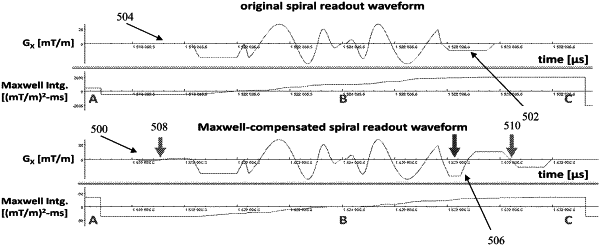| CPC G01R 33/56581 (2013.01) [G01R 33/5618 (2013.01)] | 16 Claims |

|
1. A method for turbo spin-echo (TSE) imaging of a subject, the method implemented by one or more computing devices and comprising:
generating a radio frequency (RF) excitation pulse to produce transverse magnetization that generates a nuclear magnetic resonance (NMR) signal and a series of RF refocusing pulses to produce a corresponding series of NMR spin-echo signals;
modifying an original encoding gradient waveform comprising a non-rectilinear encoding trajectory by:
introducing at least one zero zeroth-moment waveform segment comprising two bipolar pairs at one or both ends of the original encoding gradient waveform; and
reversing a polarity of one of the two bipolar pairs for one of a first gradient axis or a second gradient axis different from the first gradient axis;
generating during an interval adjacent to each of the series of RF refocusing pulses a first gradient pulse and a second gradient pulse, wherein:
at least one of the first or second gradient pulses is generated according to the modified gradient waveform; and
the first and second gradient pulses encode the NMR spin-echo signals corresponding to the first gradient axis and the second gradient axis, respectively; and
constructing an image from generated digitized samples of the NMR spin-echo signals obtained based on the encoding.
|